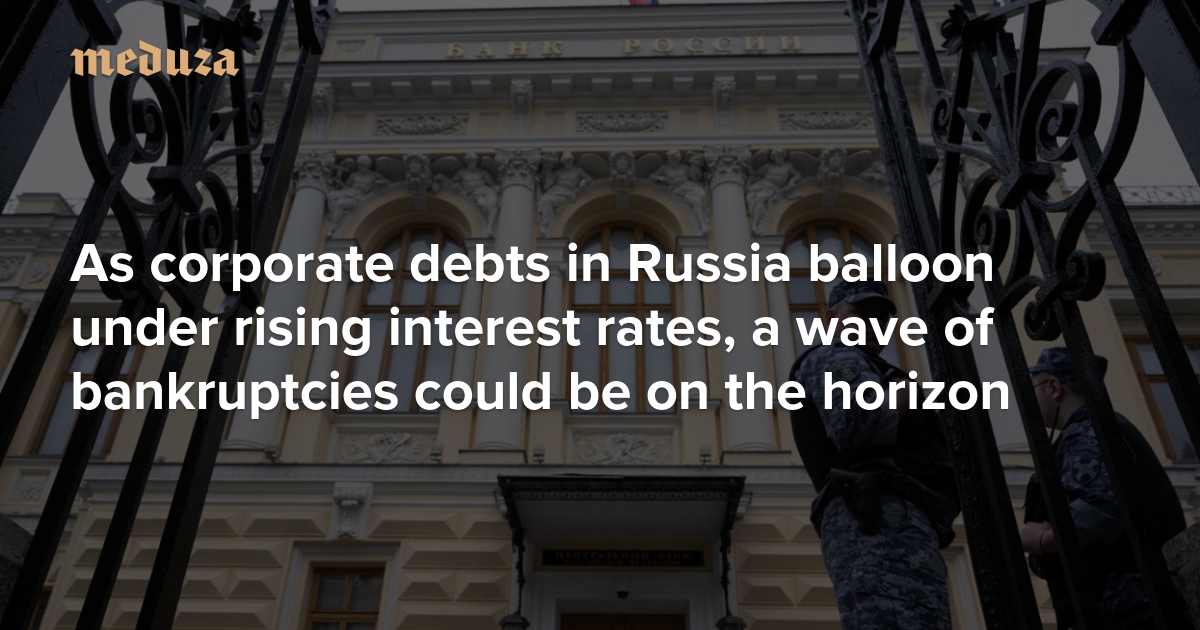Since the summer of 2023, Russia’s key interest rate has been rising steadily, making loans more expensive and pushing up debt burdens. The rate now stands at 21 percent, and the Central Bank is expected to raise it again in December. Businesses have already begun reporting a rise in late payments from counterparties — a potential warning sign of looming defaults, as many companies find it nearly impossible to meet debt obligations with interest rates above 20 percent. Meduza explains whether these fears are justified, how soon a wave of bankruptcies might hit, and why the Central Bank seems unconcerned.
Many companies in Russia now face a serious risk of bankruptcy, and it seems there’s little they can do to change the situation. The roots of this crisis go back to 2022, right after Moscow launched its full-scale invasion of Ukraine. At that time, Russia’s Central Bank raised the key interest rate to 20 percent per annum, effectively bringing all lending in the country to a halt. By April, however, the first major rate cut took place, followed by another in May, and within a few months, the rate had fallen back to 7.5 percent. Forecasts anticipated that this trend would continue and that loans would become more affordable.



I get what you mean, but Russia is in for a very bad economic future, even if the war in Ukraine ended today.